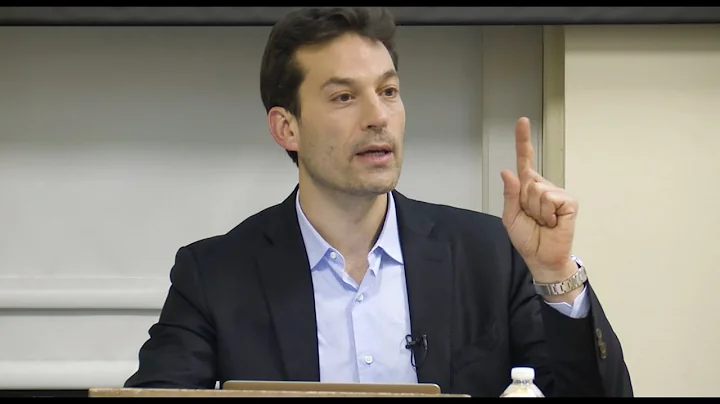
Xuan Huiwen, a psychological author who graduated from East China Normal University, recently brought her latest psychological research work "The Mandela Effect" to help readers understand ourselves more clearly and correctly.
This book has a total of eleven chapters. Each chapter contains wonderful psychological content, allowing everyone to have a better insight into the various psychological problems that we humans have in social interactions, so as to learn from them and learn more correctly. Get to know myself. The Mandela Effect is mentioned in the first chapter. What is the Mandela Effect? So you are like this. It is said that " the founding father of South Africa " actually only passed away in 2013, but he was "socially dead" in 2010, which resulted in such memory errors and deviations, forming the phenomenon of "misplaced memories of things" , we call it the Mandela effect. In it, the author also collects psychological research to explain that when an individual is under psychological pressure and is given hints and inducements from the outside world, the individual is more likely to have false memories when reorganizing his or her memory content, and a Mandela effect naturally occurs.
After that, the author uses the family Juanzi, Li Gang and his wife to deal with the issue of "change money" in the relationship between mother-in-law and daughter-in-law, and the author also uses the stories of Ma Li and Susan in the workplace to illustrate the recall of the past. Sometimes, the safest way to deal with it is to analyze the problem rationally and objectively, instead of thinking that you are right and the other party is wrong from the beginning. Only by treating problems based on the facts can we avoid being deceived by false memories, which may bring regrets to ourselves and harm to others.
Chapter 2 talks about Wallenda effect . The origin story is Wallenda is a famous high-altitude tightrope walker in the United States. He usually has excellent results, but during a major performance, he unfortunately slipped and died. The reason was that he was too preoccupied with his worries and was distracted from his performance, which naturally led to an accident. In the psychological world, the mentality of always worrying about gains and losses in order to achieve a goal is named " Wallenda mentality ". This is a very common psychological phenomenon among people in our real world. One of the more authoritative statements is that the author quoted the argument explained in the book "Beyond Success" by sports psychology John Elliott: the stronger the purpose, the less likely it is to succeed. This illustrates the importance of a peaceful mind.
It is worth noting that in addition to the authoritative theories of psychological masters, the author also cited the story of stock god Buffett to guide everyone on how to deal with and avoid falling into the Wallenda effect. Of course, I don’t need to talk about Buffett’s achievements and deeds, but I rarely talk about his failures and how he faced them. The author cited this vivid example to illustrate that when Buffett faced failure, he responded. With a "a blessing in disguise" mentality, his success lies in his focus on the process of things, not the results. Therefore, when he is focused, he can go all out on his own, thereby avoiding adverse consequences caused by distraction. In addition, Buffett's "I enjoy what I do, I tap dance to work every day." If you entertain your work in joy, with such a good attitude, you will naturally not worry about gains and losses, and naturally there will be no adverse consequences. , leading to the Wallenda effect.
Chapter 3 talks about learned helplessness. What is learned helplessness? It refers to a psychological state in which an individual, after experiencing some kind of learning, forms an uncontrollable cognition when faced with an uncontrollable situation, that no matter how hard he tries, he cannot change the outcome of the matter, which then leads to giving up efforts. This is a negative psychological attitude. This theory was created by Seligman, the father of American positive psychology, who conducted a classic experiment with dogs. It is worth mentioning that this positive attitude was inspired by Seligman's daughter's growth, because her daughter liked to complain when she was 3-5 years old, which caused her father's depression. After the age of five, his daughter learned to stop complaining about anything, and dealt with and faced problems with a positive attitude under the correct guidance of her father. Therefore, both father and daughter felt the beauty and happiness of life. Since a positive attitude makes people happy.In addition, the author also uses the example of Moses old man who lived and learned from old age to explain how to do what you like and have a positive life. Why should we be negative and complaining? The term positive discipline is very popular now, and this is naturally the development of positive psychology .
Chapter 4 The band float effect is actually a herd mentality. Here we use the three-perpendicular experiment of American social psychologist Solomon Asch to illustrate this psychological phenomenon of conformity. Here I like the example of the tulip commercial activities in the 17th century, which illustrates the bad phenomena of comparison, vanity and blind obedience in commercial activities. As far as modern times are concerned, the author also illustrates the disadvantages of the same band bandwagon effect from the situation of women's weight loss craze. Of course, at the end, the author also cited the example of Japanese "fat girl" Naomi Watanabe, explaining that you should not follow the trend and be confident in your own mentality, so as to avoid falling into the clutches of the band bandwagon effect.
Chapter 5 talks about Barnum effect . What we are talking about here is a kind of people who like to sit in the seats. This kind of person is sensitive and is very affected by other people's evaluation of themselves, whether good or bad, and thus makes wrong cognitions and behaviors, or displays an irrational psychological state. In the Barnum Effect in the face of unreal evaluations, the author cited the example of the chemist Wallach to illustrate how to recognize yourself and not belittle yourself because of external evaluations. Manage your strengths carefully and you will eventually reap the rewards in life.
Chapter 6 is the Lucifer Effect, which explains the influence of the environment on people. It is the same as the Chinese saying "Those who are close to red are red and those who are close to ink are black". Among them, Philip Zimbardo's famous psychological book " "The Lucifer Effect: How Good People Become Demons" is naturally a highly recommended book. The more profound reflection here is that the reason why people sometimes become bad is because of the influence of "situational power" on individual behavior. This naturally exposes the dark side of people, and the significance of the Lucifer Effect is that the fickleness of the person opposite, the cold talk, the mood swings, and the deterioration of people are all normal reactions of human nature. This teaches us to correctly understand our own shortcomings and the shortcomings of others. Don't blame yourself or others too much, because in this way we can believe in the future more positively and pursue a better life. The self-serving bias in Chapter 7 of
illustrates the selfish personality of a lao lao who has a self-serving bias. He will attribute his success to himself and blame his failures on others. Among them, the author also proposes a methodology to deal with psychological defects and how to truly serve oneself. If you want to see short-term success through development, you must learn time management, learn to keep smiling, learn to use your personal skills in work and leisure activities, learn aerobic breathing , ensure adequate sleep, etc.
Chapter 8 talks about how we deal with the "anchoring effect" of not fixating our thinking. Chapter 9 is about the reflection-in-the-mirror effect, which tells us not to live in the eyes of others. Among them, the author mentioned the content of breaking the labels in the eyes of others, and the positive attitude towards life shown by the sisters in the recent "Lang Jie 3" is a powerful example of working hard to break through themselves. Just try not to let others know you in a stereotyped way. Chapter 10 is Kulishov Effect . The effect here comes from Kulishov . He put forward a positive creative program: the structural basis of the film does not come from realistic materials, but from spatial structure and montage . The more interesting example here is that when the best Coca-Cola entered the Chinese market, it was stereotyped and unpopular because of its reputation as "tadpole chewing wax", but Coca-Cola kept a clear head, discovered problems, and avoided Curry Due to the preconceived cognitive bias of the Shaw effect, they used advertising methods such as changing the name and using Ruan Lingyu to speak out, and finally made the Coke Company what it is today.
The caterpillar effect in Chapter 11 shows that you should not follow the crowd and fall into the dangers of the caterpillar effect.This shows that in our individual development, we must continue to grow, constantly change our thinking, seek differences and innovate, in order to adapt to the current changes and rejuvenate our lives. In addition to talking about the Mandela Effect, this book
also explains the Wallenda effect, learned helplessness, the bandwagon effect, the Barnum effect, the Lucifer effect, the self-serving bias, the anchor effect, and the mirror self. Effect, Kuleshov effect, caterpillar effect, these 11 behavioral logics that make people think deeply can help us get rid of our inner cognitive biases and help us understand ourselves. This is a handbook on human confusion.





















